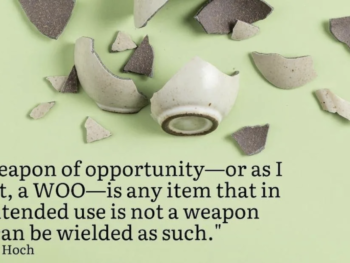In this post on our crime scene cleaning series, we will look a bit at the biohazards involved. If you are new to the term, a biohazard aka biological hazard is a biological substance that poses a threat to the health of living organisms, primarily humans.
Crime Scene Cleaning Crime Scene Cleaning – Writer Questions Stages of Decomposition Podcast
 |
According to the World Health Organization, the health risk of having a corpse around is not as bad as you might think. If a person died without an infectious disease, their body isn’t so much of a biohazard as just a mess. If that is the case, then why are human bodily fluids labeled a health hazard? Well, let’s see…
BODILY FLUIDS BIOHAZARDS
Bodily fluids are fluids produced by the body from the cerebrospinal fluid around your brain to the sweat on your feet and everything in between. In and of themselves they are not hazardous. It is the pathogens they could carry that are.
Bodily fluids, even from the deceased can transmit pathogens. Here are some of those pathogens as well as how long they can survive outside the body.
Cholera – feces – 50 days, glass – a month, a coin – week, soil and dust – 16 days, fingertips – 1- 2 hours
Ebola – 6 days.
E coli – 1-4 hours
Hepatitis B – a week
Hepatitis C – four days
HIV – 5-6 days in dried blood, longer in air tight container such as a syringe
Lassa Fever (Hemorrhagic Fever) – 1 hour
Mycobacterium Tuberculosis – 6 months
Rotavirus – dry surface – 10 days, wet surface – several weeks
Salmonella – four hours
Staphylococcus Aureus (causes MRSA) – weeks
Shigella – on food for up to 10 days (think hand to food transmission)
Typhoid/Paratyphoid Fever – months
(All that just makes me want to wash my hands.)
DEAD STUFF REALLY ISN’T SO DEADLY
In the podcast on decomposition, we learned that microorganisms inside the body break it down to basically a liquid state. But, those microorganisms aren’t dangerous. And, the liquid state of the human body isn’t either assuming that the person does not have an infectious disease such as listed above.
Basically, a decomposing body is more of a stink problem than health problem. And, technically, that stink could kill you, but you’d have to have a lot of it. According to the Washington City Paper:
A dead body gives of a variety of gases as it decays. Two of them, aptly named cadaverine and putrescine, are primarily responsible for “dead body smell,” and are produced mainly during the bloat and putrefaction stage of decomposition. The two chemicals are toxic, but only in large amounts; a 200-pound individual could ingest more than a quarter pound of either without getting a lethal dose.
DEADY BODY CULTURE
The view of dead bodies is, like a whole lot of things, a matter of culture. In some cultures, they just aren’t that big of a deal. Here is a National Geographic video of an Indonesian culture that lives with dead bodies for weeks – emphasis on GRAPHIC there. You will see very dead bodies as well as an animal sacrifice (1:57 – 2:07). You’ve been warned. (I’m so sorry about that thumbnail. 😆 )
All right then, that’s it for this post. In the next round we will look closer at bio clean up. Until then, get blood on your pages.
Here’s a little factoid about me. I used to do Christian missions work in Honduras. Beautiful country, beautiful people. I stayed at El Rancho Paraíso near San Pedro Sula. A woman in a nearby village died and our ranch made a wooden casket for her. Supplies were not in abundance so they didn’t want to use more than needed. The deceased was about my size so I was the model for that casket. They drew it around me and I hopped in an out as needed until its assigned inhabitant took her place.










Interesting post … that's so neat you got to fit for a casket ;d I should watch that video … but the thumbnail is freaky enough ;d
MB> keturahskorner.blogspot.com
PB> thegirlwhodoesntexist.com